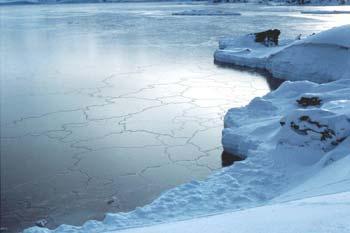Source: Xinhua
04-23-2009 11:09
Special Report: Tech MaxWASHINGTON, April 21 (Xinhua) -- Scientists from British Antarctic Survey (BAS) and NASA say that Antarctic sea ice has increased by a small amount as a result of the ozone hole delaying the impact of greenhouse gas increases on the climate of the continent, according to a report to be published Thursday in U.S. journal Geophysical Research Letters.
 |
| Freezing Sea Ice Antarctica |
Sea ice plays a key role in the global environment -- reflecting heat from the sun and providing a habitat for marine life. At both poles sea ice cover is at its minimum during summer. However, during the winter freeze in Antarctica this ice cover expands to an area roughly twice the size of Europe.
Satellite images show that since the 1970s the extent of Antarctic sea ice has increased at a rate of 100,000 square km a decade.
The new research helps explain why observed changes in the amount of sea ice cover are so different in both polar regions.
Lead author Professor John Turner of BAS says, "Our results show the complexity of climate change across the Earth. While there is increasing evidence that the loss of sea ice in the Arctic has occurred due to human activity, in the Antarctic human influence through the ozone hole has had the reverse effect and resulted in more ice. Although the ozone hole is in many ways holding back the effects of greenhouse gas increases on the Antarctic, this will not last, as we expect ozone levels to recover by the end of the 21st Century. By then there is likely to be around one third less Antarctic sea ice."
